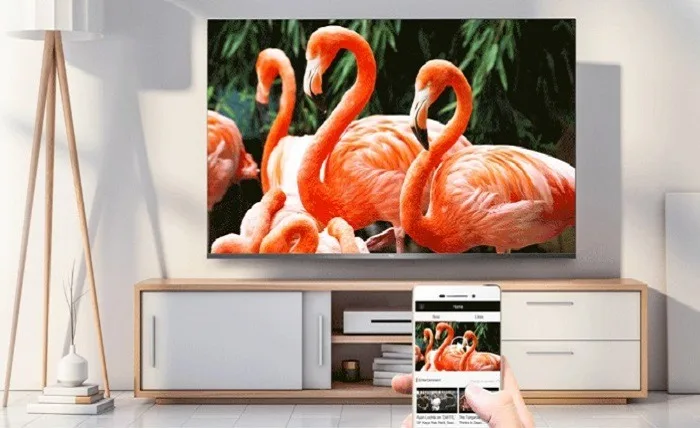Our phones are not just devices for communication and entertainment but gateways to a new world of possibilities. One such exciting realm is screencasting, which allows us to stream content from our smartphones directly onto the big screen of our TVs. Whether you’re looking to binge-watch your favorite series or share memorable moments with friends and family, screencasting offers a seamless way to amplify your viewing experience. In this blog post, we will explore the different methods available for screencasting and their unique features and benefits. From wireless options like Chromecast and Apple AirPlay to wired connections using HDMI cables.
The Different Screen Casting Methods
Let’s take a closer look at some of these methods.
Smart TV built-in
Another option is Smart TVs that come with built-in casting capabilities. With this method, you can wirelessly mirror your phone’s display onto the television screen without additional hardware. It offers convenience and simplicity, but may have only some advanced features in dedicated streaming devices.
Chromecast
Chromecast offers convenience and ease of use with its wireless streaming capabilities. Many TCL TVs have this option. It allows you to cast content from various apps directly to your TV. However, it requires a stable Wi-Fi connection and is limited to supported apps.
Miracast and Airplay 2
Newer TVs also support wireless screen mirroring technologies like Miracast or AirPlay 2. These methods allow you to wirelessly mirror your phone’s display onto the TV without additional hardware or cables.
It works with most devices that support Wi-Fi Direct. This means you can mirror the entire screen of your phone or tablet onto your TV without additional hardware. However, only some devices support Miracast.
However, compatibility may vary depending on the brand of your TV and mobile device. A feature that facilitates screencasting is TCL MultiView 2.0. On a single TV screen, it can accommodate four screencasts. TCL TVs support TCL Multiview 2.0, so locating one that meets your needs will be easy. You may effortlessly screencast from numerous apps on one sizable TV screen using a TCL TV that supports MultiView 2.0. These TV models have screens that range in size from 55″ to 82″C835, so you can select one that precisely fits your room.
HDMI cable
Suppose you don’t have a Smart TV or a dedicated streaming device. In that case, another option is using an HDMI cable to physically connect your phone or tablet to the TV. This provides reliable connectivity and ensures minimal lag during playback. However, it does require cables and limits mobility compared to wireless options.
An HDMI cable is a reliable and straightforward method that guarantees high-quality video and audio transmission. It doesn’t rely on internet connectivity, but does require physical connections between devices. Additionally, it may limit mobility due to cable length restrictions.

Conclusion
In this article, we have explored the different methods for screen cast to tv. We have discussed three popular methods: Chromecast, Miracast, and HDMI cable. Which screencasting method is right depends on your specific needs and preferences. When deciding, consider factors such as device compatibility, available apps or content sources, convenience versus quality trade-offs, and budget constraints.



